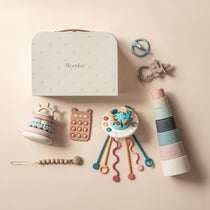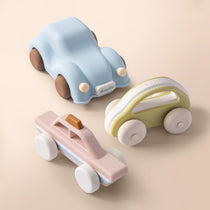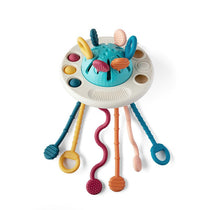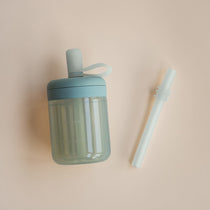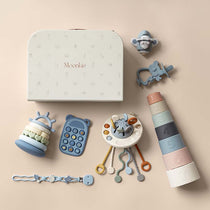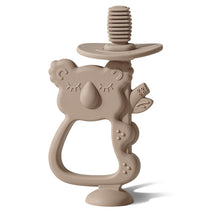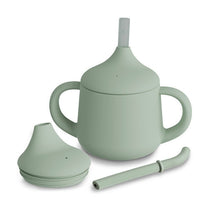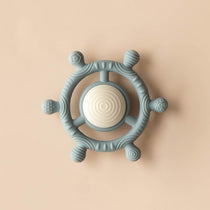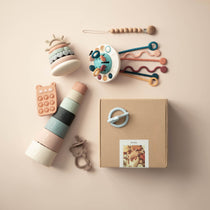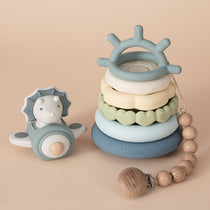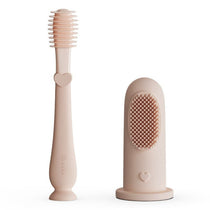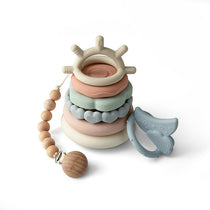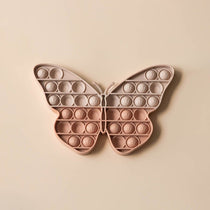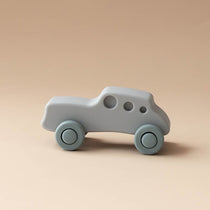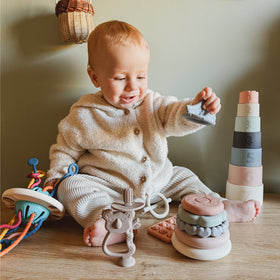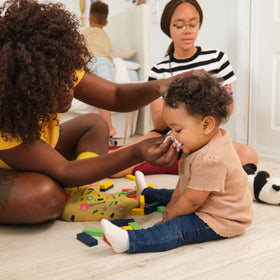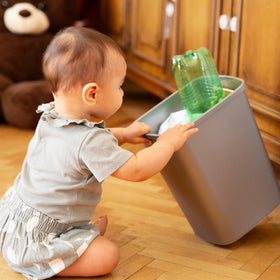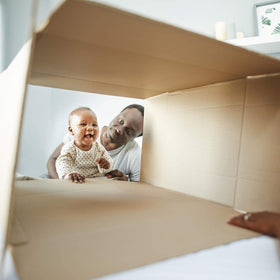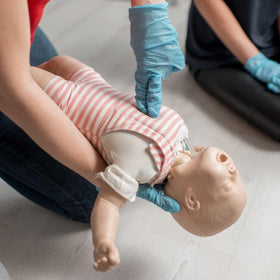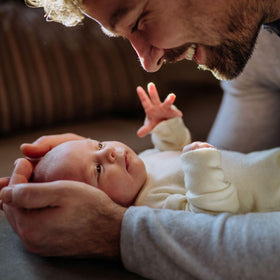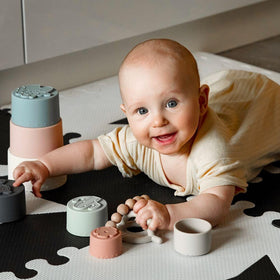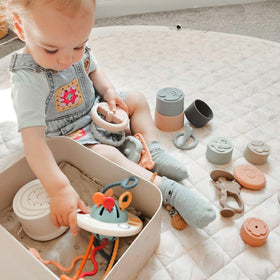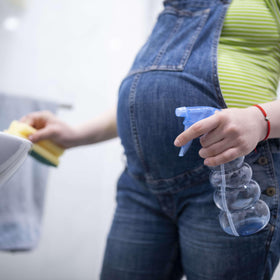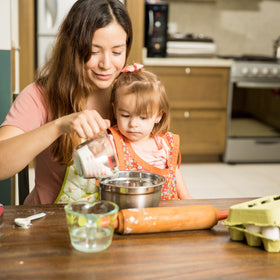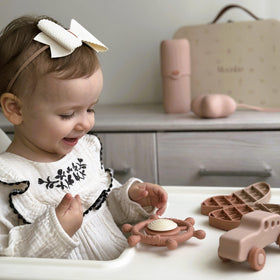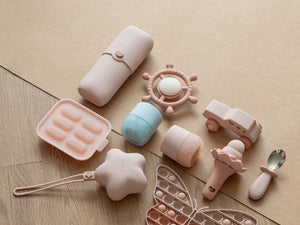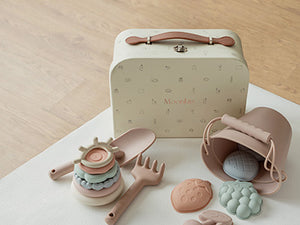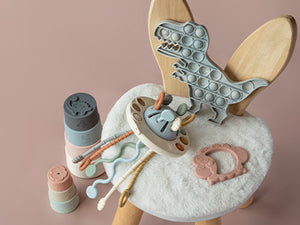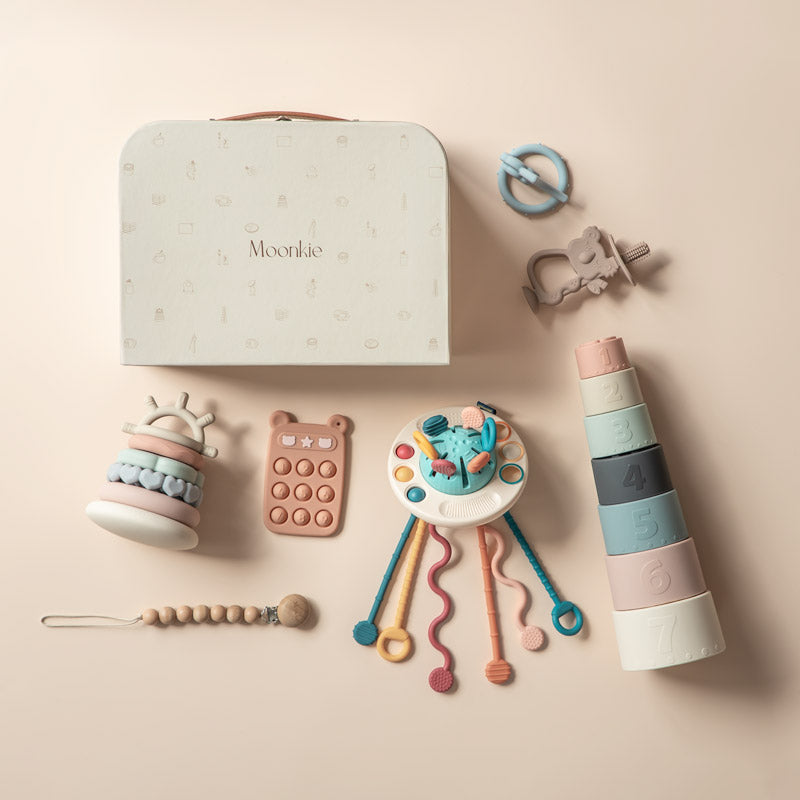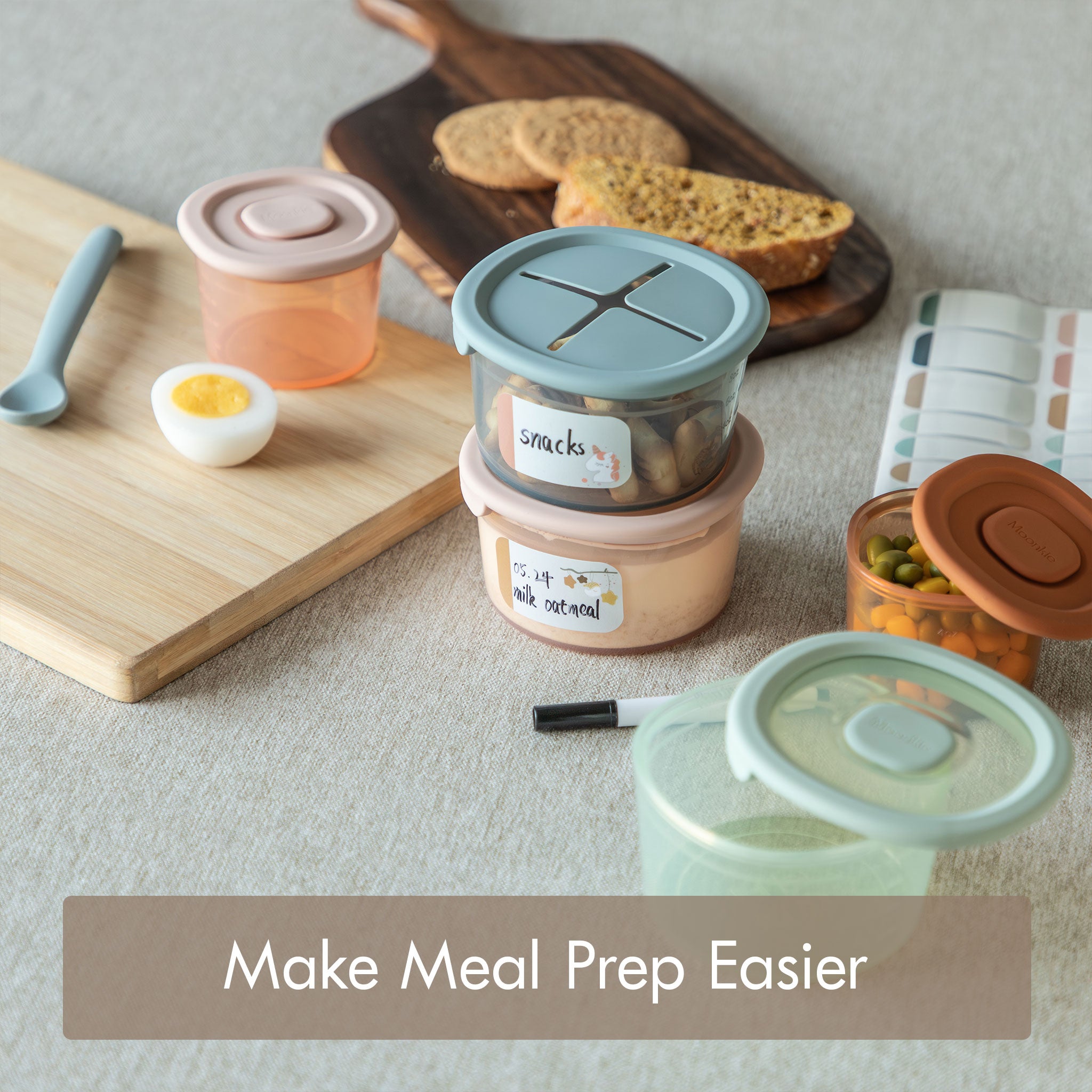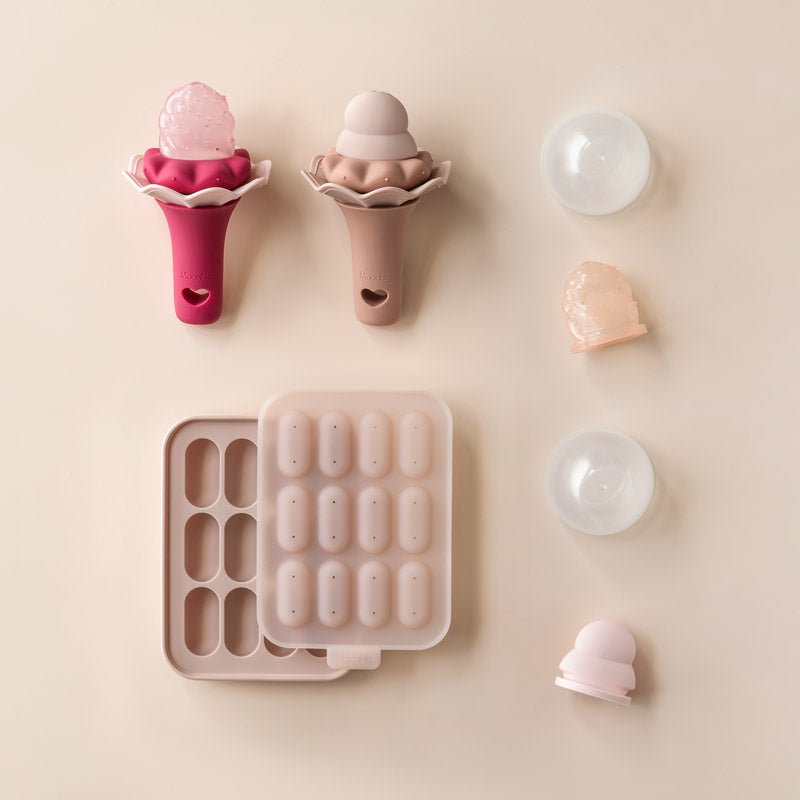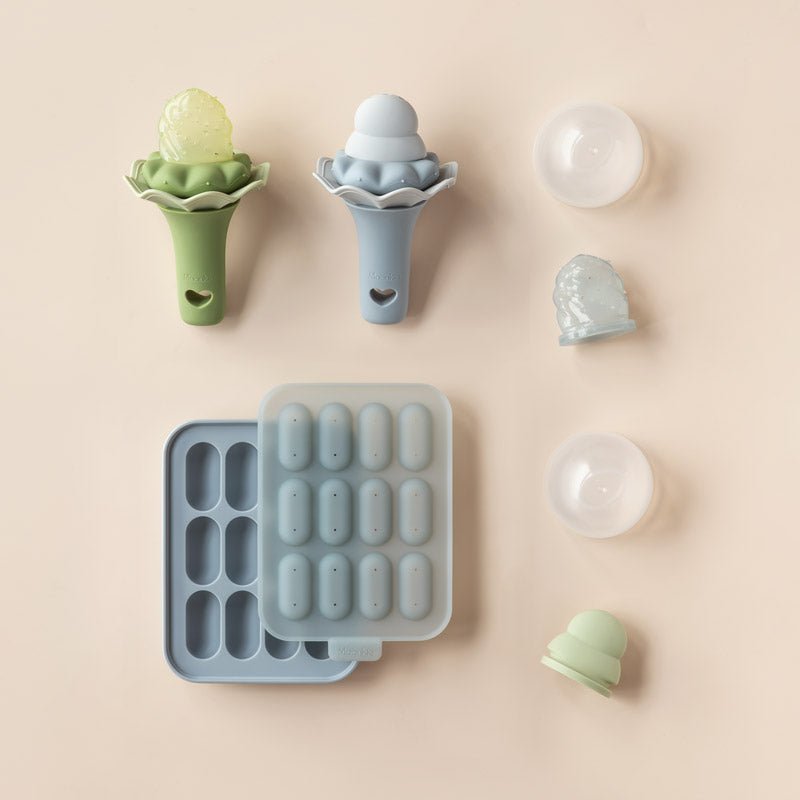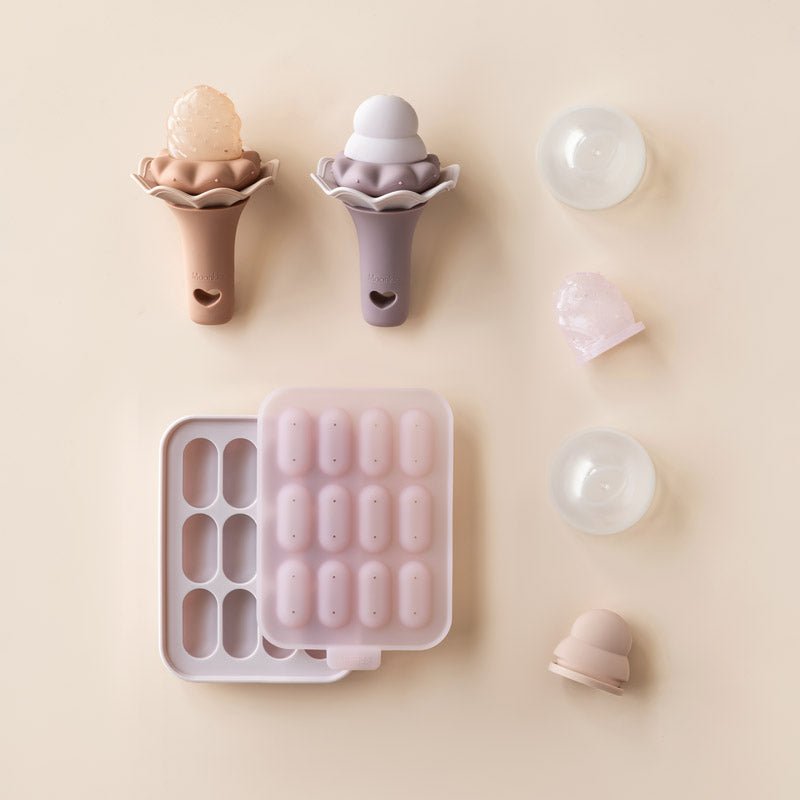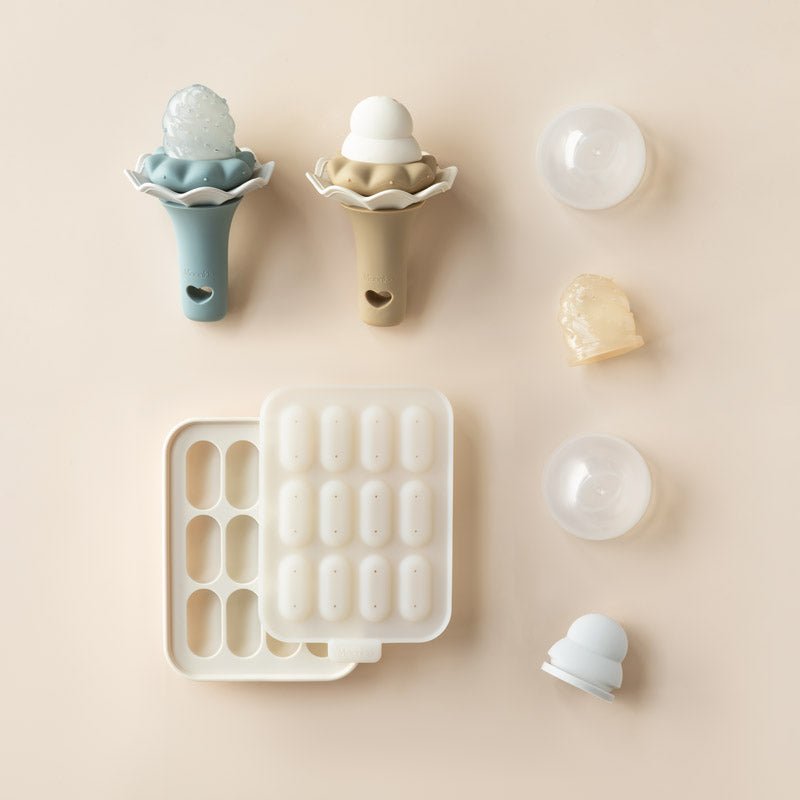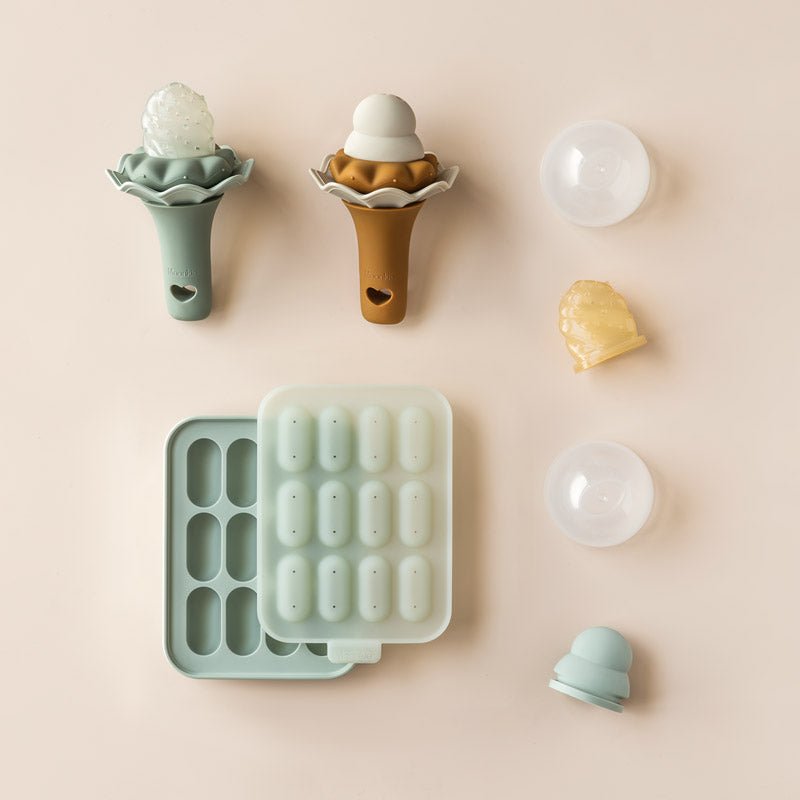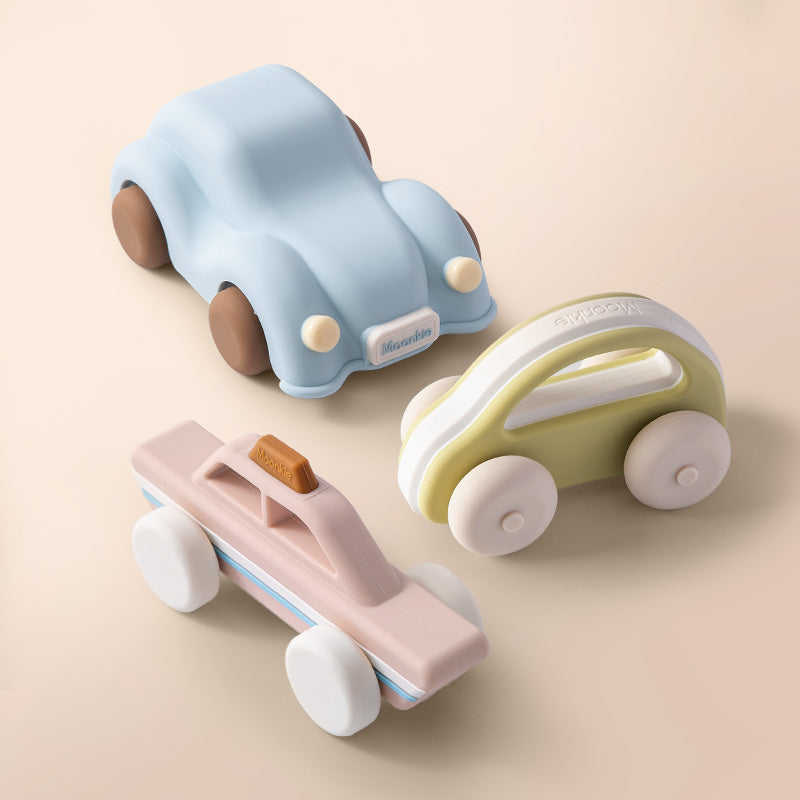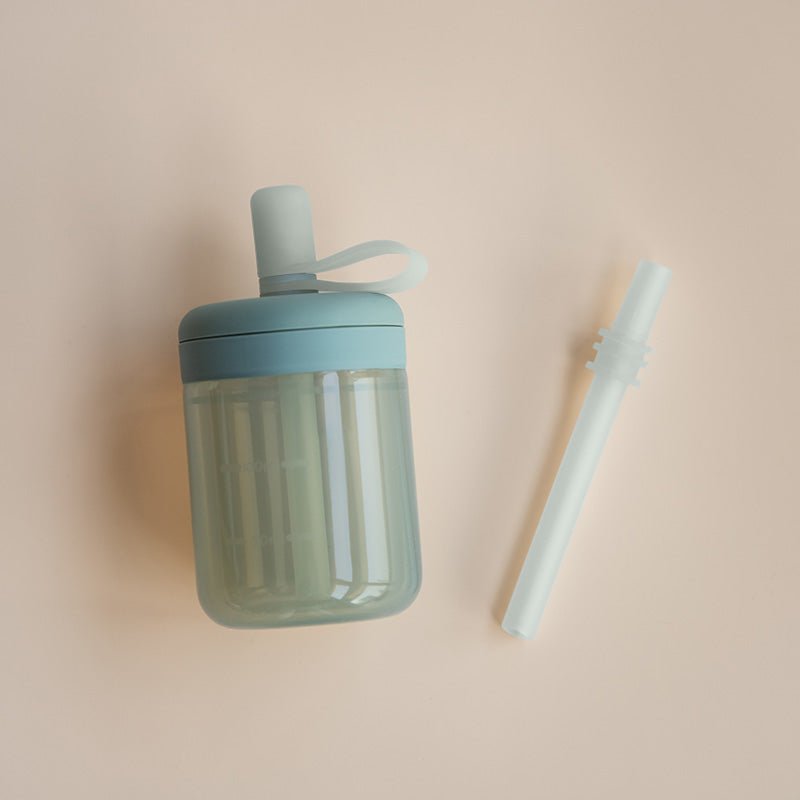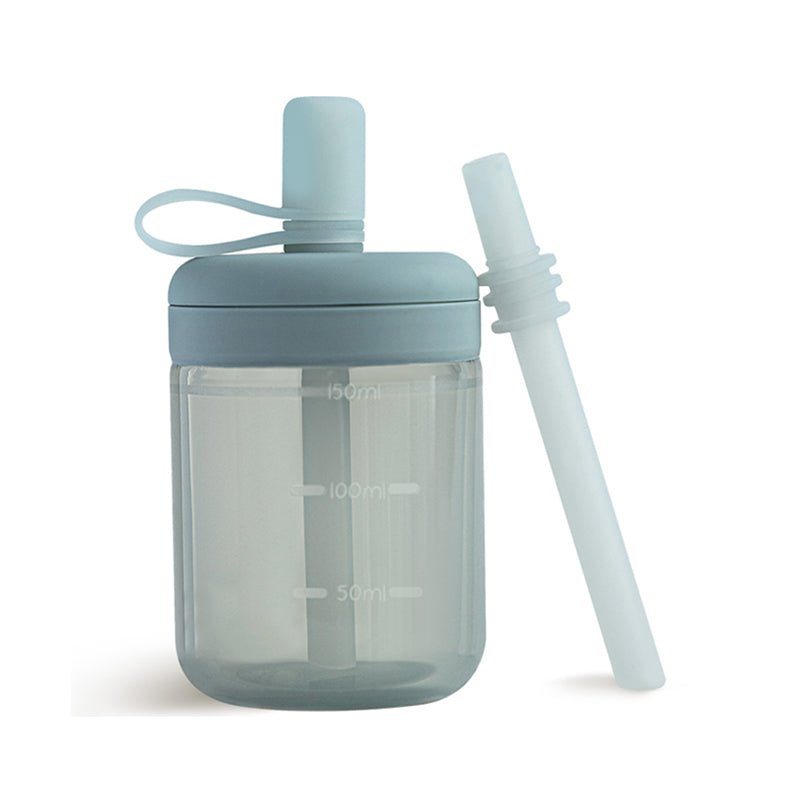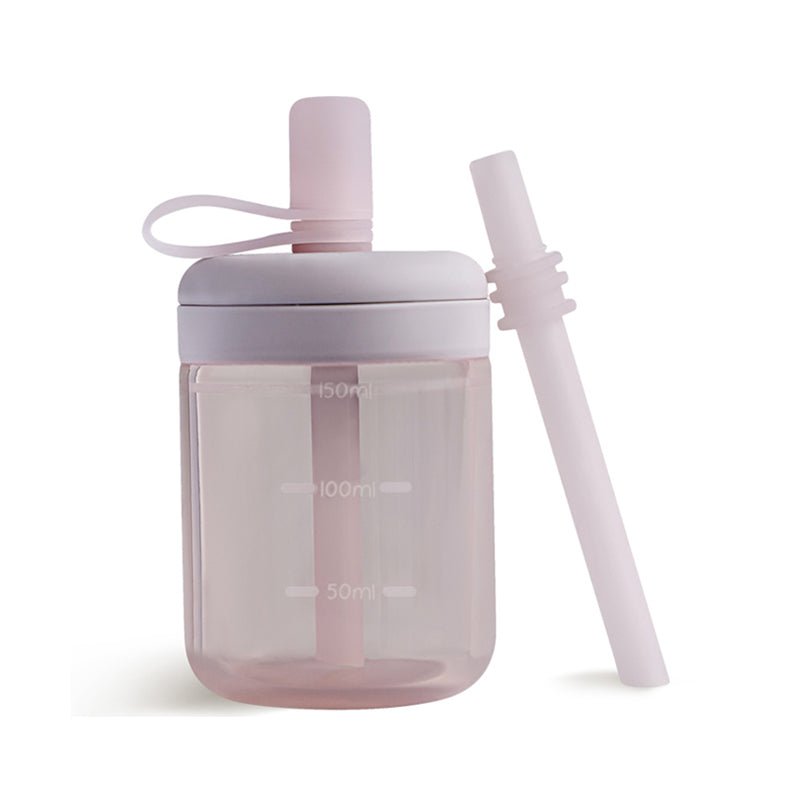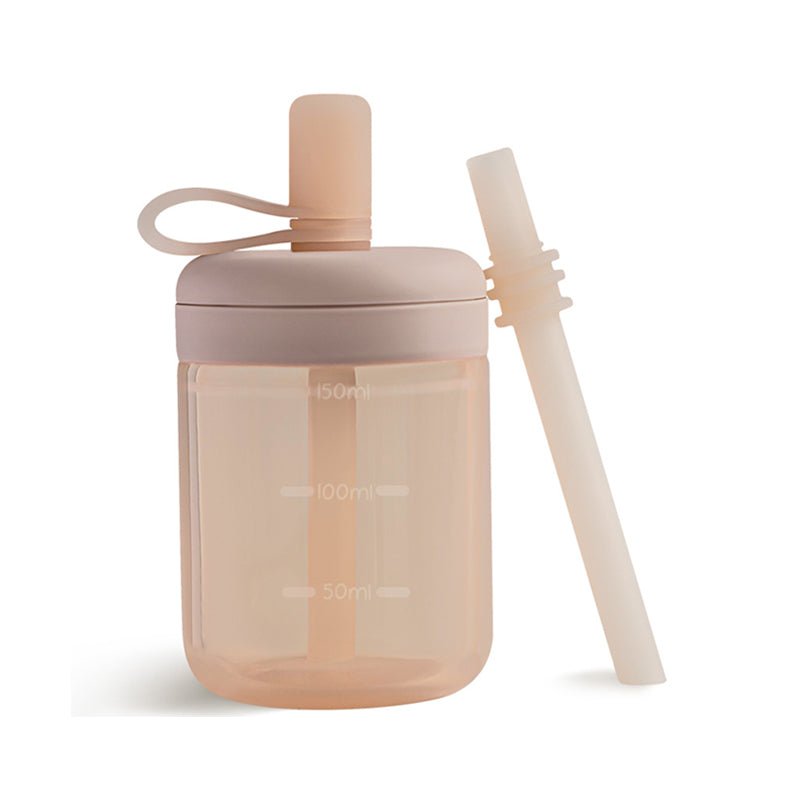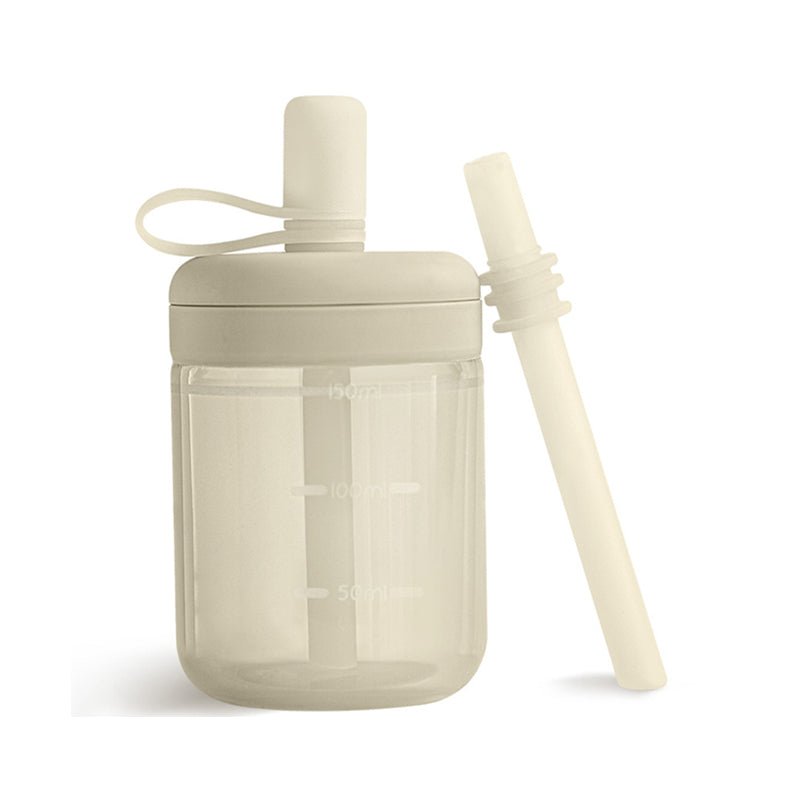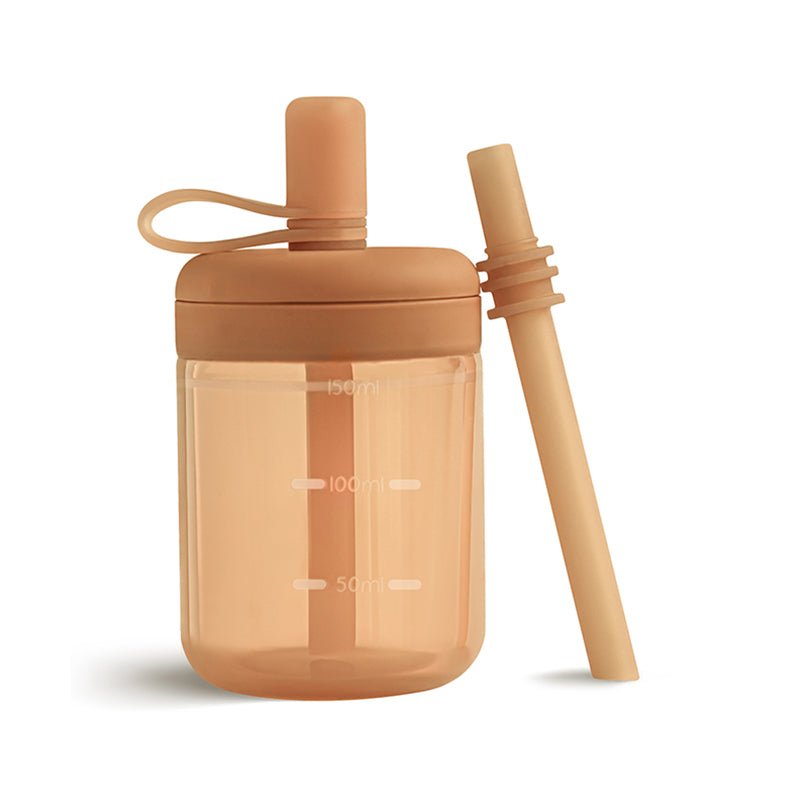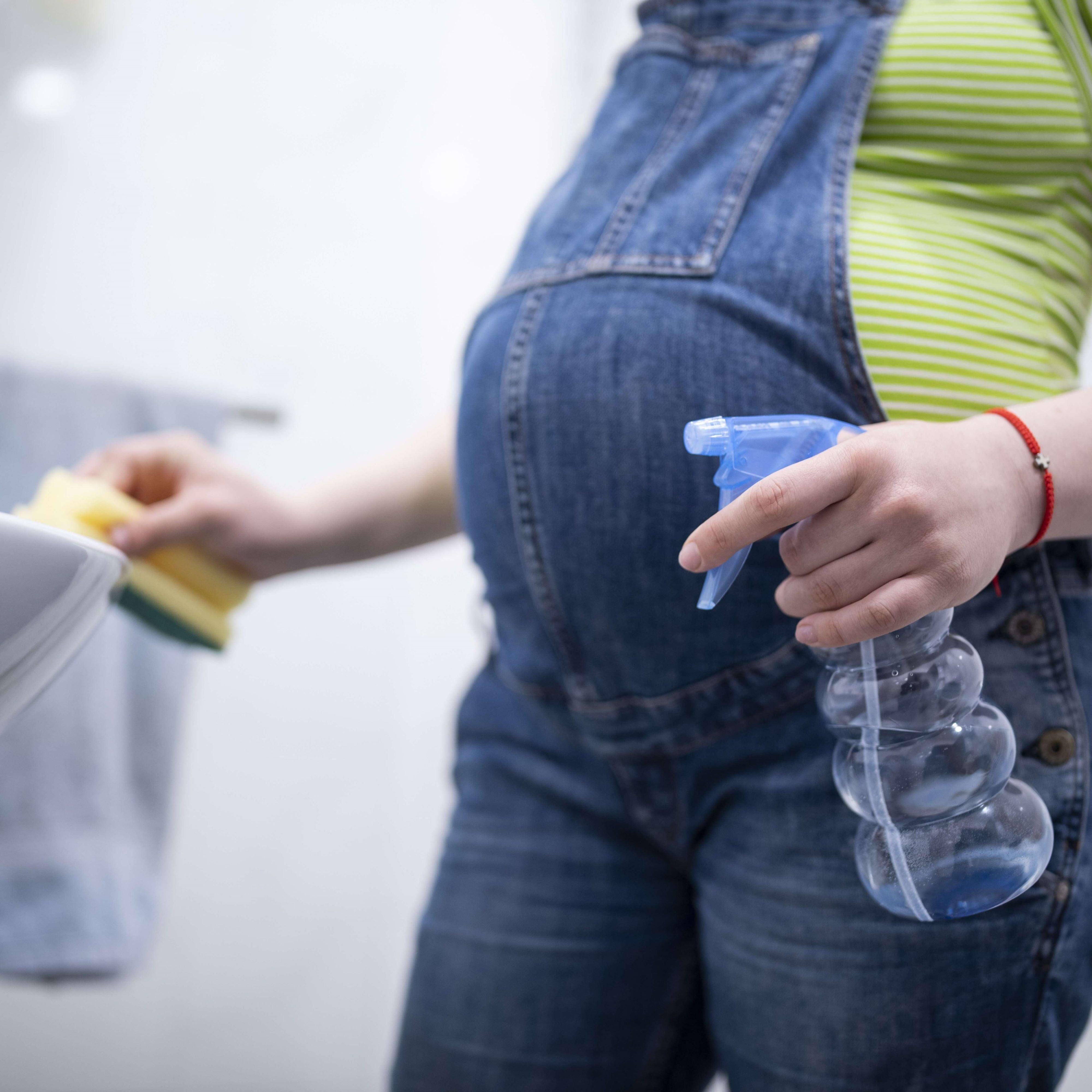
So, your doctor told you that you may need a cesarean due to your baby's position, growth problems, or some other medical issue. Breathe easy! A c-section is likely not what you had in mind, but it will probably go smoother than all those horror stories online.
A cesarean delivery, also called a c-section, is a surgical delivery through an incision in the mother's lower abdomen. Doctors may suggest a c-section in case of complications in labor, the baby is in distress, the baby is in the wrong position, the placenta is blocking the cervix, or other issues.
As scary as major surgery for mom and baby can be, especially in an emergency, rest assured that c-sections are common procedures practiced regularly. They are quick, efficient, and surprisingly effective at controlling scary factors. Nonetheless, you likely have questions like I did, so here are some answers!
1. Can I Avoid a Cesarean Delivery?
Yes and no. Sometimes, cesareans are necessary due to mismanaging preexisting conditions. Changing one's lifestyle habits to manage high blood pressure, diabetes, obesity, heart issues, and other preexisting conditions will help lower your risk of having a cesarean delivery.
But there are plenty of times when the ball is just not in your court.
For example, I was all about a natural delivery with my first and second. I had done all the research, taken every precaution, did all the exercises, and had a great diet--but my first went into distress a few hours into labor, and my second had complications prior to her due date. Both ended up being cesarean deliveries.
Though I had done everything I could to avoid a surgical delivery, and our numbers were all excellent, issues arose in labor that we could not control.
2. Why Should I Want to Avoid a Cesarean Delivery?
Though cesarean sections are well-practiced, fairly safe for babies, and convenient for doctors, they are still an expensive major surgery that takes weeks to recover from. Nonetheless, about one in three babies were born via cesarean delivery in 2023 (source).
It is essential that you are aware of the risks to your health and that of your baby during and after a cesarean delivery. Since there is no time to explain this in case of an emergency, here is a quick list.
Potential Problems for Mothers During a Cesarean Section
Infection of the incision after surgery
Infection inside the uterus or other organs near the incision
Hemorrhage or lots of blood loss during the operation
Accidental injury to other organs during surgery
Allergic reactions to medication
Possible additional surgeries to repair other injuries
Emotional distress
Uterine scar tissue could complicate later pregnancies or the ability to become pregnant again
Having to wait to hold your baby
Discomfort from excessive fluids (IVs)
Extra time in the hospital
Potential income loss from extra time off work to recover
Many of these risks can be lessened with preparation and gentle care, but the risks to a mother's health are always higher for a c-section than for a vaginal delivery (source).
3. What Are Potential Problems for a Cesarean Baby?
Cesarean babies also face more risks than those delivered vaginally. For example, if the gestational age is ahead by two weeks or more, the baby can be delivered too early. Many cesareans are planned for weeks 38 or 39 to avoid the mother going into labor naturally, causing an emergency cesarean.
So, suppose the baby is thought to be 39 weeks gestationally when he is actually 36 weeks gestationally. In that case, he may have some complications with his respiratory system, weight gain, color, blood sugar levels, jaundice, sepsis, feeding ability, or ability to regulate his temperature (source).
These issues may cause an extended hospital stay or extra pediatrician visits over the next few weeks.
But even babies delivered via cesarean at the right gestational age face risks, such as (source):
Injury or cut from the operation
Difficulty waking and feeding due to mom's medication in his bloodstream
Breathing issues from not having amniotic fluid squeezed out during vaginal delivery
Low APGAR scores (baby's color, heart rate, reflexes, muscle tone, and respiratory effort)
APGAR scores are generally higher for vaginally delivered babies because they have to work through labor, giving more vigorous scores immediately after birth. However, cesarean babies do not get worked up as much, so they tend to score lower, which makes them seem less vigorous and healthy.
4. What Happens During a Cesarean Delivery?
For a planned cesarean, you will go in about two and a half hours early to fill out some paperwork, get briefed on the procedure, change into surgical clothes, and begin getting IV fluids. You will be administered medication as well.

About 15-30 minutes before the actual operation begins, you will be wheeled into the operating room to receive an epidural (unless you have a medical reason to undergo anesthesia instead).
Once administered, you will be put into position as the team finishes preparing the room. If you have a family member or friend who is permitted to be in the room with you, they will typically be allowed to enter at this time.
Right before the first incision, the doctors (usually two) will prepare the incision site and poke around to ensure the medication is working. They will often ask you some questions as they begin cutting to see if you react in any way that indicates that more medication is needed.
The anesthesiologist often sits at your head or nearby in case more medication is needed, and the nurses in the room will be busy ensuring everything is in order and within reach for the doctors.
Both hospitals I delivered in allowed my husband to see the surgery, but there was a barrier to prevent me from looking. You can ask for a mirror above you to see your baby get pulled out, but you need to ask for that well before the delivery date.
What Happens After the Baby Comes Out?
Once your baby has been pulled out, the doctors will immediately set about cleaning and closing you up. You'll hear your baby's precious first cries while the nurses clean your baby up and perform the 3-5 minute APGAR test to ensure there's nothing wrong with the baby that requires immediate action.
Then, a nurse will bring your baby to you wrapped in a little blanket (it's cold in the operating room!) and put the baby's face on your face. Amazingly, your little one will stop crying and try to snuggle up to you!
Your partner can then leave with the baby to wait for you in your room or stay with you, holding the baby while the doctors finish closing you up. From the time you meet your little one, it will be roughly 15-20 minutes before they are done.
Can I Feel What Happens During a C-Section?
You can feel what happens throughout the surgery, but it feels more like tugging, pulling, and lots of pressure than cutting, reaching, and moving organs around. If you feel tearing, searing pain, or sharp pains, you need to say so right away.
One of the strangest feelings is when the doctors move your bladder and intestines aside so they can see the uterus better. To me, it just feels like a lot of pressure. However, my husband verified both times they were simply pushing those organs aside to make an incision on the uterus.
It is crucial that you remain calm as the doctors do their work. Freaking out over what you feel or hear will only drive your blood pressure up and cause a complication. Choose your operation buddy wisely!
Can I Ask Doctors to Look for Another Problem While They Are There?
If you have a history of endometriosis or adenomyosis, you can talk to your doctor about checking for it during the cesarean section, but your doctor needs to know that you want this beforehand.
You can certainly ask your doctor to look for other issues in that area while you are open on the table, but anything like this should be discussed a few weeks beforehand.
Looking at things related to other organs will likely require the presence of a different specialist, which may not happen. But you can always ask!
5. How Long Will I Have to Stay in the Hospital After a Cesarean?
Most cesarean hospital stays are 3-5 days after the surgery. Your medical team needs to see that the mom and baby are past the most dangerous risks in that period. However, complications for the mother or baby can prolong that stay.
For instance, any of the following in the mother could cause a longer hospital stay for further treatment:
Infection
Hemorrhage or internal bleeding
Allergic reactions to medication
Emotional distress
Babies who struggle with any of the following during the hospital stay may need to stay longer for further testing or treatment:
Injury during delivery
Infection
Hemorrhage or internal bleeding
Failed blood, hearing, or sight tests
Breathing issues
Jaundice
Sepsis
Not eating
High or low blood sugar
Heart rate, reflex, or muscular issues
Sleeping far too long and difficult to wake up
These are just a few issues that can happen to any baby, but the risks are higher for cesarean delivery babies.
What Can I Bring from Home to Make the Hospital Stay Easier?
Hospitals generally cover the necessities (you pay for them anyway, so you might as well use them). However, having a few extras from home may help you survive those long hospital days.

Bring a small pillow to hold against your incision whenever you cough, sneeze, sit up, or nurse your baby. The belly band many hospitals provide is helpful for some, but it made me incredibly itchy, so I couldn't stand it. The pillow was far more helpful to me.
Bring a few dresses or gowns that are not tight on your belly or chest—granny moo moos are excellent. Pants, underwear, shorts, and clingy clothes will stick to bandages, rub your incision area, and make you feel gross faster, so bring gowns if you don't want to don the open-backed hospital gowns.
Unscented soap is a must! Neither of my hospitals provided this in my room, so I asked a family member to bring me some. You don't want the fragrance oil in scented soap; quite frankly, most store-bought soaps dry your skin out.
Find a local soapmaker with a simple, unscented recipe for sensitive skin and use that for you and your baby for the next few months.
For obvious reasons, compression socks and adult diapers are also helpful in those first days. All those IV fluids work their way out quickly. The hospital will provide gauze underwear and thick pads, but they slip off easily.
One thing the staff will push you to do within a few hours of surgery is walk. Walking helps move air bubbles and stimulates healing, so it is necessary but painful. I brought a walking stick for my second c-section, which was incredibly helpful. The walker they provided hurt to move and leaning on a person felt awkward and painful.
6. What Is C-section Recovery at Home Like?
Once you are home, you feel a lot of relief. The nurses are not checking your blood pressure every 30 minutes (even at night), and you are surrounded by your safe place. But home can be difficult at first.
Most homes are not built with major surgical recoveries in mind, so if you have stairs--forget about using them. Tiny doorways, lower drawers, bathtub walls, tall or low beds and chairs, cabinet doors out of reach, and appliance doors that get stuck are all obstacles at home.
If you know or suspect that you will have a c-section, prepare your home by putting necessities within easy reach (no bending over or reaching overhead required). Stock your fridge and pantry for a couple of weeks of easy or ready-to-heat meals. Do your laundry, and be okay with skipping it for a while.
While you prepare your home, start thinking about ways to protect yourself and your baby from toxins. Here is a list of common household products that probably should be locked away for a while: 25 Common Household Things that Are Toxic to Your Baby.
Cesarean recovery requires that you rest a lot, but you also need to walk a lot. You also should not lift anything over five pounds, including your baby. So, lining up family members or friends to help you out is essential for those first two weeks at home.
7. What Are Some Products That Make C-section Recovery Easier?
When looking around for c-section recovery products, you may become overwhelmed. You certainly don't need everything the internet says you need, so here are the items that I used and found helpful.
stool softener
adult diapers
bathrobe
nursing bras with the clasp in the front
breastmilk pads
gowns and loose dresses
slip-on shoes
pack 'n play with a raised bed for the first two months
an office chair that is easy to get in and out of
a walking stick
After those first two weeks, you will certainly not feel normal, but you will feel loads better. Some of the following will still be uncomfortable or painful, so avoid them until you feel a bit better:
rocking chairs
nursing pillows
baby carriers
jeans
tennis shoes (it hurts to tie them)
boots
recliners that you have to push down to close
tall or short beds
tall stools or short chairs
stairs and ramps
8. Can I Still Breastfeed My Baby After a Cesarean Delivery?
Yes, you can still breastfeed your baby after a cesarean delivery. Breastfeeding works wonders for your baby's health and recovery and yours. It is terribly painful at first, regardless of how your little one was born, but before long, you will be able to nurse easily.
One struggle unique to cesarean moms is the difficulty and pain of holding the baby for nursing. Anything or anyone touching that incision area will cause pain, so watch out for fidgeting, kicks, and squirming. Ask for help from a visitor or nurse in the hospital and use pillows in an armchair at home.
9. What Can I Control During a Cesarean Delivery?
If you know or suspect you will have a cesarean delivery, you can still create a birth plan and discuss it with your doctor in advance. There are quite a few of those first special moments the circumstances will alter if you don't speak up beforehand.
If you want to see your baby coming into the world, you can ask for a mirror to be hung or held above you. Some hospitals will set the baby on you immediately after birth and before cleaning, but you must request this ahead of time because it is not a simple task in an operating room.
You can discuss who will hold your baby and whether they will stay in the room with you or move into the hospital room while you are being stitched up.
Medical Requests
Talk to your doctor about the bloodwork done and vaccines administered during your hospital stay. Educate yourself on them carefully to decide whether you want those administered within 24 hours of birth (the usual) or at your little one's two-month visit.
As for medication, you can request a list of standard medications that the hospital administers to cesarean mothers before and after the operation. If you know you have sensitivities to medication, bandage adhesives, or painkillers, you need to voice them and have the list altered to avoid later complications.
In my case, I neglected to do this with my second and managed to earn an extra day in the hospital to overcome those complications. Best to avoid that if you can!
Another thing you can ask for before a cesarean section is a correction for diastasis recti, a separation of abdominal muscles caused by pregnancy. This condition affects around 60% of women, and the condition often persists for months afterward (source).
When not addressed, diastasis recti can cause back pain because your abdomen isn't supporting you like it should, which is even worse when hauling a baby around all the time. During the cesarean, your doctor can stitch the separation together and close any belly button hernias to speed your abdominal recovery.
Finally, ask how you will be closed up: absorbable sutures, thread, surgical glue, or staples. You can request a certain method beforehand, but know that your preference may not be an option if some complication makes another closure method a better option.
10. Can Family or Friends Visit During or After a Cesarean Delivery?
Most hospitals will allow visitors during visitor hours and one close relative to stay with you overnight. Ask for the specific rules well before your baby's birth so you have time to communicate with everyone.

A quick note on visitors after major surgery: you don't feel well after a cesarean delivery. You're exhausted, unsteady, queasy, sweaty, cold, and gross-feeling for the first two or three days.
Additionally, all that extra fluid they had to pump into you to make surgery easier and safer makes you feel like a gigantic water balloon. You just don't feel good at all.
So, if you are one who hates to be around people when you are sick, menstruating, or otherwise in pain, don't let family and friends flock to your hospital room. Having space to rest and recover a bit is perfectly normal and advisable.
If people balk at your decision, they can get over it. A cesarean is major surgery, and it's hard on you and your baby. The last thing you need is drama, germs, and people telling you what to do or showing you all the things you cannot do right away (picking up the baby, changing the baby, walking around with the baby).
11. How Long Will It Take to Feel Normal After a C-section?
Everyone has a different c-section recovery experience heavily shaped by how healthy they were before and during pregnancy. Generally speaking, doctors say it will take you roughly six to nine months to feel normal after a c-section.
Think of it: you will have undergone major surgery that cut through your abdomen's muscles, pushed around your organs, and cut into your uterus. Though walking helps, it's not as helpful to you as it is to a woman who underwent a natural delivery.
I found that my second cesarean took a month longer to recover from than my first, even though they were two years apart. However, I can also say that being active and eating healthily certainly speeds recovery.
12. What Does a Cesarean Delivery Cost?
A typical planned cesarean will cost anywhere from $15,000 to $35,000. Mine cost $19,000 and $23,000. Insurance helps, especially if the cesarean is deemed medically necessary.
I worked hard to figure out a ballpark estimate before each cesarean, but no one could tell me beforehand. There is too much of a game between the hospital and insurance providers. The hospital must turn in a much higher bill, knowing insurance will only pay a percentage.
Also, hundreds of different things could happen in the operating room or with the mother or baby during their hospital stay. The tests, retests, food, lodging, medications, physical therapy, pediatrician visits, vaccines, and a whole slew of other factors play a role in cost. Your location also matters.
In the days after the birth, you will have a lot of paperwork to fill out for your little one. Get ahead of it by reading 10 Questions First-time Parents Ask About Their Baby's Paperwork.
13. Do I Have to Get Checkups After a Cesarean?
Unless you have issues during or right after the operation, you will probably only have one visit with your doctor six weeks after the cesarean.
You can certainly request more visits, or you may have an additional visit to remove staples (if that is how your doctor closes you up). If you feel that you are struggling with postpartum depression, reach out to your doctor right away.
14. How Long Should I Wait to Have Another Child After a Cesarean Delivery?
After the first cesarean delivery in your 20s, the doctors will likely recommend that you give yourself a full 12-18 months of healing before a positive pregnancy test. In your 30s, they will recommend a full 24-30 months.

A cesarean is not just an incision through skin and muscle but also the uterus, which must heal well enough to expand for another pregnancy. That uterine scar becomes a weak point for the crazy stretching the uterus must bear for another pregnancy, so let it heal well!
Talk to your doctor about timing, healing, and potential future pregnancies before or after your c-section delivery. They will be able to answer your questions far more specifically with your age, health, and medical history in mind.
15. Will Later Births Have to Be Cesarean Too?
If you only have one cesarean for reasons not related to a physical inability to have a child vaginally, odds are that you can have another child vaginally. This is called "vaginal birth after cesarean section" or VBAC.
VBAC means no surgery, a shorter recovery period, and a lower risk of infection, but it does have an extra step: a trial of labor. A trial of labor is a period when a woman who previously had a cesarean delivery labors for a vaginal birth under close supervision with a surgical team ready in case of complications (source).
The primary concern is a uterine rupture from the intensity of labor due to that previous incision. If anything seems off, too weak, or ruptures, the cesarean delivery team is ready to go for an emergency cesarean to save the mother and baby.
Though that sounds scary or as if a second cesarean is less risky than VBAC, VBAC is still considered safer than another cesarean section (source).
Can I Do VBAC After Having Two Cesarean Deliveries?
Most doctors will advise against doing VBAC after two cesarean deliveries, but it is possible for individuals with adequate healing time and health. The success rate of VBAC-2 is around 71% (source).
Since the success rate of VBAC-2 is not as high as that of VBAC-1, you may struggle to find a doctor willing to do it. If this is something you wish to try, start talking about it with your doctor as early as possible in your pregnancy and do your research. This is not a decision to make lightly!
Will Later Cesarean Deliveries Be More Risky Than the First?
Yes, successive cesarean deliveries will be more risky than the first. For one, you are older with each delivery, so how well your body handles the stress of surgery, medication levels, and recovery will be different each time.
Your placenta could also do odd things with the scar(s) from previous cesarean deliveries. It could implant too deeply into the uterine wall or partially or totally block the cervix. Both of these can cause lots of bleeding, premature birth, or other complications.
The scar tissue from previous cesareans also causes issues, particularly in stretching for another pregnancy or rubbing and injuring your bladder or other organs. Your chances of developing hernias also increase with each previous cesarean section, which may need surgical closure sometime after delivery (source).
If you know for sure that you want to expand your family further, consider buying baby products that are made for years of use and grow with your baby to get more bang for your buck. For more, read Taming the Home: Choosing Baby Products that Grow with Your Baby.
In a Nutshell
Modern medicine is astounding. Complications that would have certainly caused death for mother and baby 100 years ago are now a matter of surgery and recovery. Though cesarean section deliveries are more risky than vaginal births, they are a means to welcome a baby into the world when the unexpected happens.
In the end, our goal is to have a healthy, happy baby!

